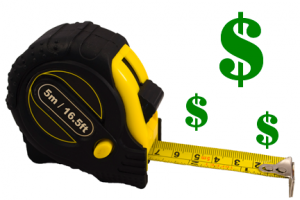 One of the mistakes I consistently see homebuyers and home sellers make is relying too heavily on a price per square foot figure. Home sellers set their asking price based on (somewhat) comparable homes that command the highest price per square foot. Conversely, homebuyers base their offer price on (somewhat) comparable homes with the lowest price per square foot.
One of the mistakes I consistently see homebuyers and home sellers make is relying too heavily on a price per square foot figure. Home sellers set their asking price based on (somewhat) comparable homes that command the highest price per square foot. Conversely, homebuyers base their offer price on (somewhat) comparable homes with the lowest price per square foot.
In both cases, neither the buyer nor seller is taking into account the unique features of the subject property. Understanding the value of these features, and putting a dollar amount to them, is at the heart of the appraiser’s art. And because the appraisal is often the final judgment of fair value in a home sale transaction, it’s important for both buyers and sellers to understand what actually goes into a price per square foot calculation.
Finishes, Décor and Upgrades
The most common mistake is not taking into account the finishes, décor and cosmetic and/or functional upgrades included in a home. You can have two identical homes, but if only one has granite counter tops, hardwood floors, dual showers, surround sound and other higher end features, price per square foot for the two homes can be quite different.
In other words, if appraisers are working within a range when determining price per square foot, the home with the upgrades will come in at the high end of the range. A home with vinyl floors, Formica counters and builder-grade light fixtures will come in at the bottom of the range.
Pools, Porches and Other Outdoor Spaces
Pools do add value to a home. So it’s rare that a home seller without a pool will use a pool home as a comp when determining price (unless the price is adjusted downward appropriately). However, there are many different factors when determining the value of a pool:
– Is the pool heated? Solar or electric?
– Is the pool screened in or open to the elements?
– Is the pool deck marcite, pavers or something else?
– Does the pool also have a spa?
– Are there water features (waterfalls) or special lighting with the pool?
You can see how a heated, enclosed pool with a spa and several waterfalls and fountains might add more value than just a basic inground pool out back.
Which brings me to another problem area for assessing value – summer kitchens. For some homeowners, a summer kitchen is simply a gas grill built into a cabinet with a little counter space. It might even be on wheels.
At the high end, a summer kitchen is virtually a full kitchen in an outdoor space. Not only is there a grill, often connected to an underground gas line, but there’s a refrigerator (or two), prep areas/countertops, storage and maybe even a wet bar with a granite top and seating for six. The area is likely covered and serves as another separate entertainment area.
Can both homeowners market their homes as having summer kitchens? Sure. Is there a drastic difference in value between the two? You betcha.
Florida Rooms and Other Enclosed Spaces
Homeowner’s will often enclose an existing porch or lanai to create more indoor living space. It may have windows and screens, decorator tile or even a fireplace. But if the area is not heated and cooled, it won’t be included in the square footage of the home. Furthermore, many appraisers will want the room to have the same utility as the rest of the home to qualify as habitable square footage. In other words, if it’s constructed of different materials than the main house, or you need to wait for it to warm up in winter or cool down in summer before using it, it probably won’t count toward square footage.
The same is true for other popular conversions, such as turning a garage into livable indoor space. These upgrades may have value for some potential buyers, but they must be heated and cooled to be included as additional square footage for the home. They’ll also need a permanent means of egress to the outside (window, door). And this doesn’t even speak to the decreased utility of not having a garage.
Competitive Market Analysis and Appraisals
Lastly, to get a better handle on the value of your home in today’s market, ask the people who know best. Your Realtor® can provide a Comparable Market Analysis that will include homes similar to your own that have sold recently, are about to close or are actively being marketed. He or she will have access to information about how those homes compare to yours, inside and out, as well as other market information that is vital to pricing your home appropriately.
If, however, you have a very unique home, and it’s difficult to find similar homes in your immediate area, you might consider getting an appraisal done before you go to market. With an appraised value in hand, your Realtor® will be able to market your home more aggressively, and you’ll be better positioned when it comes time to negotiate that offer.

Leave a Reply